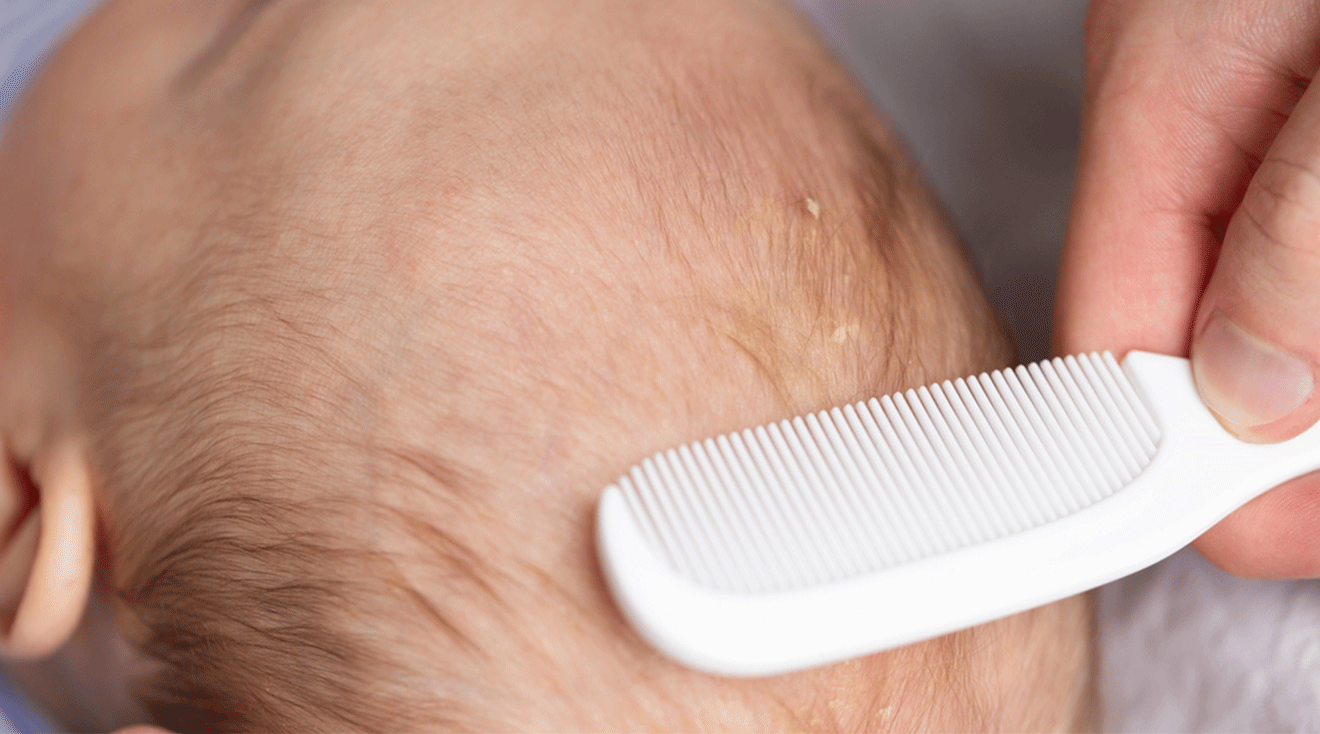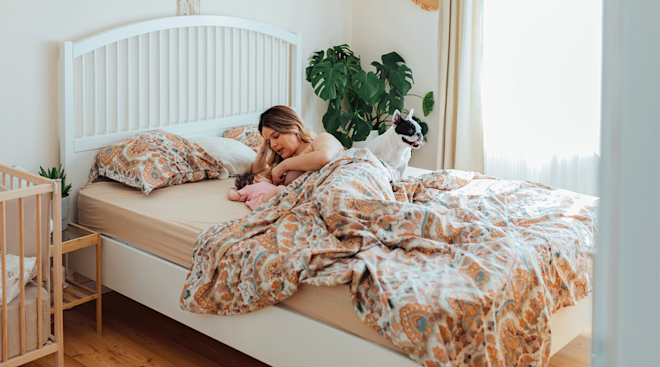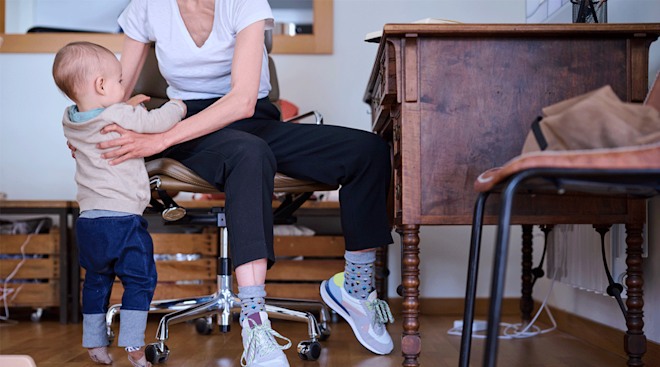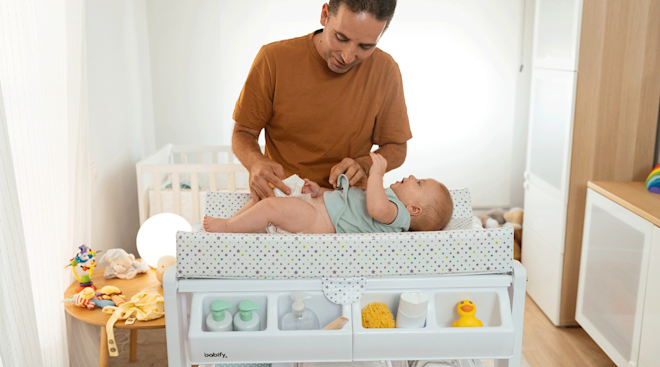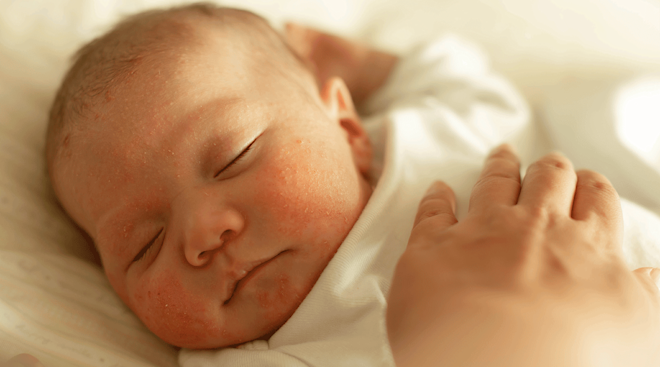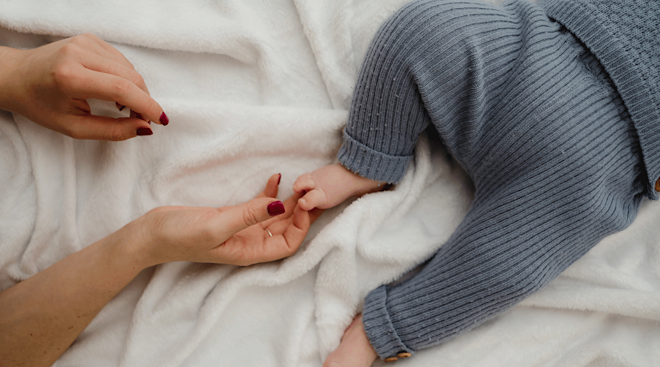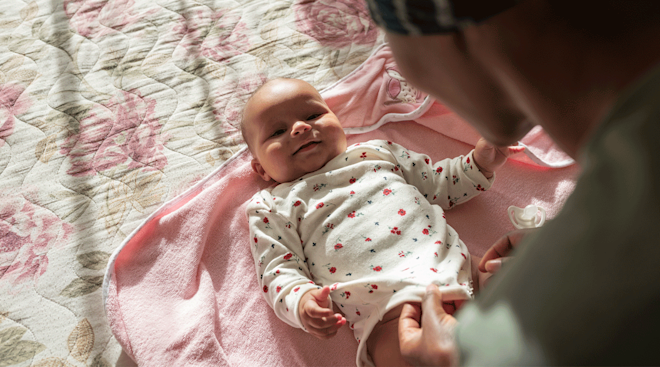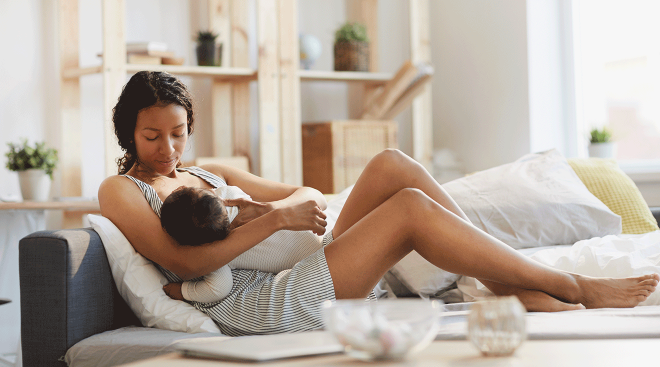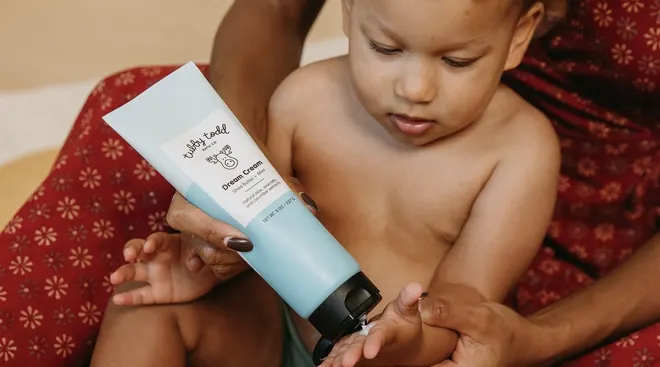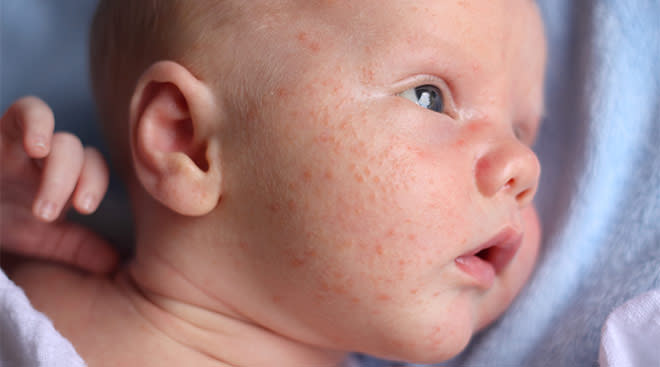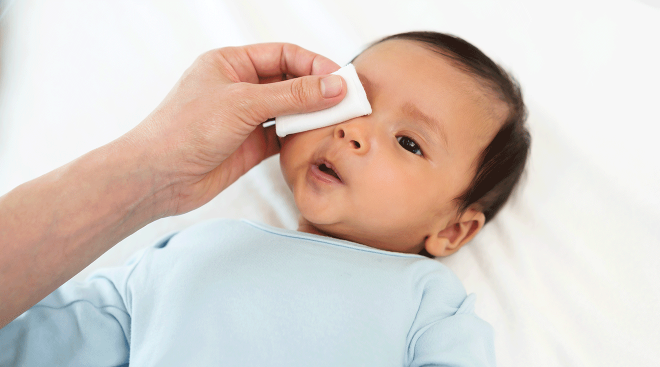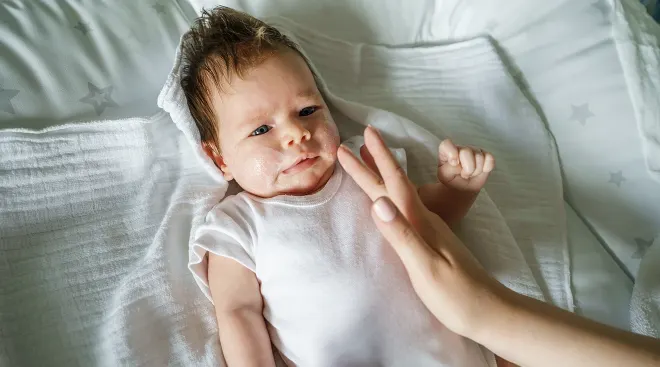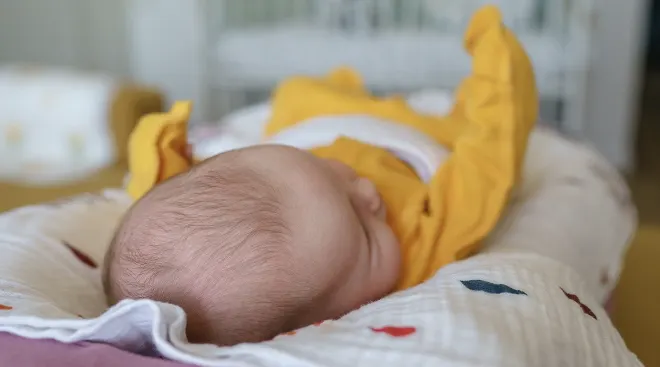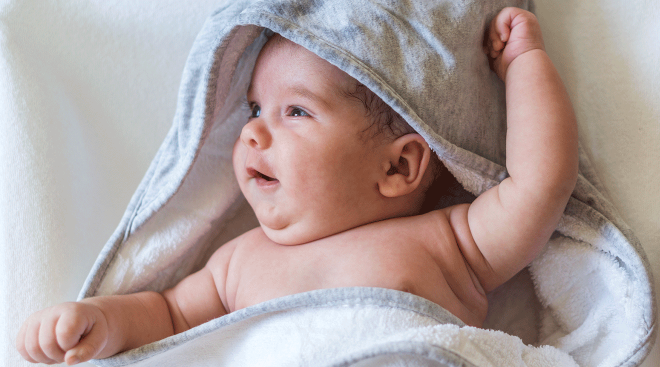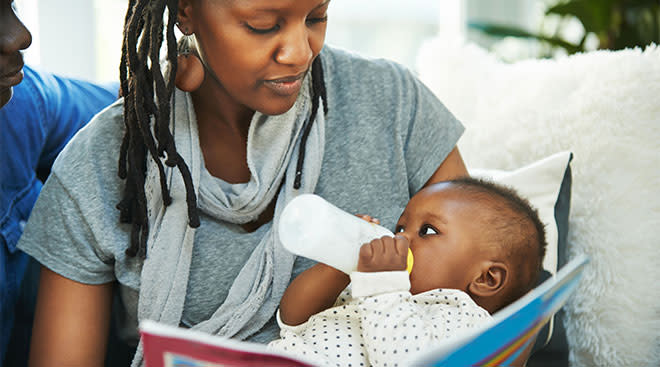Cradle Cap 101: How to Spot and Treat It
Have you noticed dry, flaky or scaly patches on baby’s head? It may be a case of cradle cap. Don’t worry—this common skin condition isn’t harmful to baby, but you’re probably eager to restore her scalp to that sweet, silky softness all the same. Here, find everything you need to know, including what causes it and how to get rid of cradle cap.
Cradle cap, also known as infantile seborrheic dermatitis, is an extremely common baby rash that affects up to 70 percent of infants and typically sets in around 3 weeks of age, explains Vikash Oza, MD, director of pediatric dermatology at NYU Langone Health in New York City.
So what does cradle cap look like? It shows up as a yellowish rash that’s either greasy, scaly or flaky, usually on the top of baby’s scalp, but it can sometimes be found behind baby’s ears, on her eyebrows and forehead, and even on her upper torso. Another sign to look out for? A distinctive cradle cap smell. If baby’s dealing with a moderate to severe case, you may notice a slight oily scent, which is normal and results from the buildup of oil on baby’s scalp. But if you pick up on a pungent odor similar to stale bread, you’re probably smelling yeast—an indication that the cradle cap rash has progressed to a yeast infection and needs to be treated by baby’s doctor.
Since cradle cap is a type of rash, a lot of parents take one look at that flaky skin and wonder: Does cradle cap itch? Rest assured, most mild to moderate cases aren’t itchy or painful, though severe cases (which usually affect babies who are 3 to 5 months old) can be. Also in the most severe cases, baby hair loss with cradle cap can occur. But even in those rare instances, any hair that baby loses will grow back pretty quickly after the rash is resolved.
Cradle cap vs. allergies
When you see baby’s previously perfect little scalp turn flaky and irritated, it’s normal to fear baby’s having an allergic reaction. So how can you tell whether baby’s dealing with cradle cap or allergies? The biggest difference between these two baby skin conditions is whether your little one seems itchy, says Karen Mackler, MD, a clinical assistant professor in the department of medicine at Albert Einstein College of Medicine in New York City. “In babies this age, itchiness may present as excessive fussiness, or baby may attempt to rub her head on anything that’s nearby,” she adds. If you’re worried baby’s cradle cap is an indication of future allergy issues, you can relax—that doesn’t seem to be the case. As Oza explains, “Often in children with eczema, they start off with severe cases of cradle cap, but infant cradle cap itself is not an indication of any sort of future allergy.”
It’s not known for sure what causes cradle cap in babies, but dermatologists believe the mother’s hormones likely play a role in the onset. “Hormones can be passed to baby through the placenta prior to birth, or through breast milk after birth,” Oza says, which may be a factor in why cradle cap begins so early in life. So while you might worry that this scaly, flaky rash is a sign you’re doing something wrong, or that baby isn’t getting enough baths, that’s not the case. “Even with good cleaning and washing every night, babies can still develop cradle cap simply by virtue of mom’s residual hormones causing the sebaceous glands to secrete more oil,” says Mackler. When the scalp makes too much oil, it traps the skin flakes and prevents them from naturally shedding, leading to those yellowy scales.
Is cradle cap contagious?
If there’s a baby in your moms’ group with a nasty bout of cradle cap, don’t fret. Even in the most severe cases, the condition is not contagious. That’s great news, right? The not-so-great news is that there’s also no way of preventing cradle cap. “It’s just a normal developmental issue,” Oza says.
The duration of cradle cap depends on several factors, Oza says, but in most cases it gradually goes away during the first year of life. That said, the condition can sometimes persist beyond baby’s first birthday. Here’s what can determine how long cradle cap lasts:
• Severity of the condition. While the vast majority of cradle cap cases are mild and completely harmless, severe cradle cap can sometimes occur, which may develop into a fungal infection. A pediatrician or pediatric dermatologist should have a look and will likely prescribe a low-strength steroid cream.
• How the scalp is cleansed. Most cases don’t require much in the way of cradle cap treatment, but Mackler says regularly cleansing and brushing baby’s scalp can resolve it more quickly. “Shampoo baby’s scalp every day and use a soft brush to try to remove scales and excess buildup,” she says. “With cradle cap, you don’t want to let the scales accumulate, because the buildup can cause the condition to get worse.” If you’re dealing with a relatively mild case, it’s fine to stick to baby’s normal bathing and grooming routine—just be sure you’re using gentle bath products made just for babies.
• Level of scalp irritation. If there’s one big no-no, Oza says, it’s scratching or picking at baby’s cradle cap rash (as tempting as it may be). This can irritate your child’s scalp and lead to an infection—which, in turn, would take longer to heal.
Although it may look unsightly, all but the most severe cases of cradle cap can be treated at home without prescription medication. Here, we’ve listed several tried-and-true home remedies for cradle cap you can try.
• Baby shampoo. For mild cases, you can get rid of the flakes pretty fast with regular use of baby shampoo. Follow up by gently brushing baby’s scalp with a cradle cap brush—a soft brush that gently massages baby’s scalp and removes the flakes and scales.
• Cradle cap shampoo. If regular baby shampoo isn’t cutting it, you can try one of the many special cradle cap shampoos for babies. Mustela Foam Shampoo for Newborns is one we love. It contains beta hydroxy acid (BHA) and salicylic acid to exfoliate the patches, and Climbazole, an antifungal agent.
• Olive oil. Try using olive oil to provide a moisture barrier for baby’s scalp. Not only does the oil soften the skin flakes, making them easier to brush off, but it also helps soothe the skin and reduce inflammation. Simply rub a few drops of oil onto baby’s head and massage with your fingers or a cradle cap brush. Rinse the oil off with a gentle baby shampoo and brush again. Never let the oil sit overnight on baby’s scalp, since this can clog the oil glands further and worsen the condition.
• Coconut oil. Coconut oil for cradle cap works in much the same way as olive oil, except—bonus—it smells amazing! Plus, “there’s evidence that virgin coconut oil is more effective for the skin barrier than other oils,” Oza says. Apply the coconut oil the same way as olive oil: Massage gently, then rinse with shampoo and water.
What to avoid when treating cradle cap
Remember that baby’s skin is still incredibly sensitive, so when considering your options for how to get rid of cradle cap, it’s important to avoid using harsh or potentially toxic chemicals. Oza warns that it’s never a good idea to apply undiluted apple cider vinegar, hydrogen peroxide or essential oils for cradle cap. While these are often touted as home remedies for cradle cap (and a host of other conditions), they can be too strong for baby’s skin and cause irritation. Check with your pediatrician first and dilute according to her guidance.
Certain over-the-counter antifungal creams and dandruff shampoos can be effective, but consult your pediatrician before using any adult-strength product on baby, since these products can be toxic when absorbed through baby’s skin.
Updated December 2017
Please note: The Bump and the materials and information it contains are not intended to, and do not constitute, medical or other health advice or diagnosis and should not be used as such. You should always consult with a qualified physician or health professional about your specific circumstances.
Navigate forward to interact with the calendar and select a date. Press the question mark key to get the keyboard shortcuts for changing dates.
































